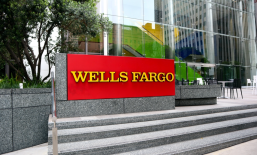Think back to 2020 and 2021, when restaurant delivery was suddenly the pantry, kitchen and server to millions of Americans locked down at home. Operators fast-tracked solutions like the decision to open a digital front door that enabled diners to order online in brand-new ways.
However, that heroic effort on the part of eateries was not without issue. From quick-service chains to fast food to fine dining, the digital tools adopted during those frantic times were often from different vendors and couldn’t seamlessly pass information from front-of-house to the kitchen and back office — and though crucial, they created some new problems.
As the dust settled throughout 2022 and new priorities like efficiency and interconnectedness entered the frame, the idea of unified platforms piqued the food industry’s interest.
Eric Miller, vice president and interim general manager for the Americas at LS Retail, an Aptos company, was there for all of it and observed the breakdowns between restaurant systems. And while he understood the decisions operators made during the darkest hours of the pandemic, he saw a better way.
Describing the systems issues facing restaurants at the end of 2022 as compared to 2020, he told PYMNTS, “the disconnect is really around different systems for different parts of the organization. You’re going to have a system that does online ordering. You’re going to have something that’s doing staff and labor tracking. You’re going to have something in the dining room that the servers are ordering from. Maybe it’s different than what you do checkout from.”
That problem flows from the dining room to the kitchen to the manager’s office and impacts ordering (a separate system), inventory management (another separate system), and so on. Miller said, “You have to have a tight connection between those two, or forecasting becomes difficult. They look basically [at] historicals for their forecasting, they don’t look at what’s happening, what’s trending and where the market’s going.”
Advertisement: Scroll to Continue
What restaurants are figuring out is the power of having all of this happen within a unified platform — and that’s where LS Retail comes in with its LS Central and LS First for restaurant solutions.
See also: Scale up Digital Capabilities Now to Stay Ahead Tomorrow
Changing Times and New Priorities
To harmonize bulk ordering, inventory, dinner orders, reporting and payments, more operators are turning to unified systems that process all of it in a platform environment.
Miller said, “if you have a system that is the same system that does your online ordering, it’s the same system that does your ordering in the restaurant, and that’s the same system that does your inventory tracking, that becomes a whole lot more simplified.”
Not only does this reduce the confusion and inefficiency of pulling data from multiple disconnected systems, but it also allows restaurants to enjoy cloud benefits like auto updates.
“If you want to have the latest and greatest, which you’re getting most of the time every month very quickly, you’re going to need a platform that’s more agile, and able to take those updates quicker and be able to utilize everything that’s coming out that’s new to your organization as well as to the restaurant industry,” he said.
An added benefit of running on a unified system is that different suppliers see the standalone eatery or chain of restaurants as a single brand, and that has advantages.
He said, “you might be able to take advantage of forecasting and inventory tracking,” as a burger from supplier A may be a different brand or size than supplier B. That’s a problem for restaurants, and they know it, explaining interest in trading multiple tools for a platform.
To this end, LS Retail conducted marketing surveys and found that IT managers and CIOs believe “they can improve their efficiencies by over 60% just by having that unified system. That would be a huge advantage to most of the organizations these days,” Miller said.
See also: Unattended Retail and Multi-Device Payment Systems Set to Reshape Checkout
Case In Point: Cracker Barrel
As case studies go, Miller has a marquee name to go by, as he led the integration of the LS Retail unified system for the Cracker Barrel chain and its 664 locations in the U.S.
Complimenting the chain on its ability to see the possibilities, he related the story of his initial meeting with the company’s CIO, who needed just a few key questions answered.
“Their CIO came into the room and said, ‘can you do a retail transaction?’ Yes. ‘Can you do a restaurant transaction?’ Yes. ‘Can you put those into the same transaction?’ Yes. ‘OK. That’s enough’. Then he walked out of the room.” There was more to it, naturally, but it seemed clear from just those three key questions that a unified approach would work.
Miller said with unified as a starting point, not only do current operations become easier, but future expansions of features and functions can happen without messy new integrations.
From there, “you can maybe do financials within it, you can do inventory within it,” he said, adding that Cracker Barrel “has taken a little bit to get to the stores and restaurants. There’s a transition period that always has to happen. But now that we’re there, now we can look at doing updates with the latest and greatest on SaaS and cloud.”
Cracker Barrel runs on the Microsoft platform — as LS Retail systems do — making the move even easier and leaving nothing but open highway for making ongoing changes on the fly.
Asked if an inflationary economy that could enter recession is a good time for restaurants to be making investments, Miller said, “it’s a need and necessity in the industry right now, especially in restaurants. I think you’re going to continue to see spend in the restaurant tech spectrum to take advantage of all the information that is available, but is not connected today.”



